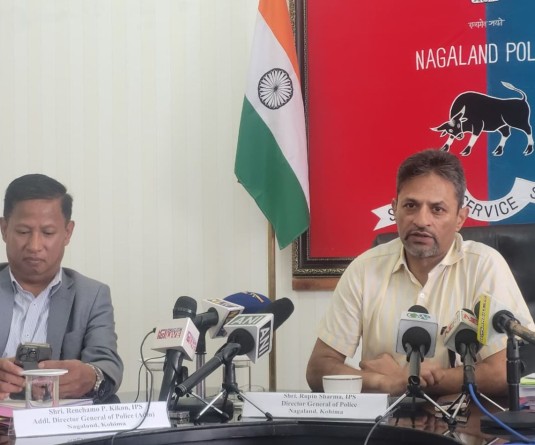
Morung Express News
Dimapur | October 1
Haemorrhagic Septicaemia in buffaloes, first reported from Kanjang village under Meluri Sub-division in Phek District, has now been reported from Reguri village.
The Morung Express, on September 7 reported that a two-member team was dispatched to Kanjang village under Meluri to investigate the mysterious death of buffaloes in the village.
Later on September 24, the Department of Animal Husbandry & Veterinary Science (AH&VS) Nagaland informed that buffaloes were confirmed to be succumbing to Haemorrhagic Septicaemia after laboratory tests were conducted to specify the etiology (cause) of the disease from ELISA laboratory, Kohima. “It was confirmed that the etiology of the disease was a Gram negative, Coccobacilli, Bipolar organism called Pasteurellamultocida,” it said.
Thereafter, on September 27, the department informed deaths of buffaloes due to HS were also being reported from Reguri village. “Outbreak of Hemorrhagic Septicemia in Phek district. Mortality of buffaloes are high in Kangjan and Reguri village,” (sic), the official account of AH&VS Nagaland updated on Twitter.
Meanwhile, an official of the district veterinary office Phek on October 1 informed that mortalities were reported from Reguri ‘all of a sudden’ last week though no new cases were coming from Kanjang for last 10 days.
Six staff members, three each from Meluri and Phek office, were dispatched immediately to investigate when we heard the news, the official said, while antibiotics were procured from Dimapur for emergency use.
As with the case of Kanjang, it was informed that the team was finding it hard to give an overall assessment as the villagers practices ‘free-range’ rearing system spread over difficult terrain.
The official estimated that so far Kanjang has reported around 70 mortalities while there were around 25 deaths in Reguri village.
Meanwhile, a Rapid Response Team from the Chief Veterinary Office Phek will be conducting vaccination of buffaloes in the two affected villages on October 2.
According to the Food and Agriculture Organization (FAO), Haemorrhagic Septicaemia is “an acute, fatal, septicaemic disease of cattle and water buffaloes caused by a gram negative bacterium Pasteurella multocida.
Cattle and water buffaloes are the primary species affected and water buffaloes are considered to be highly susceptible, it added, further informing that animals between the ages of 6 and 24 months are the most severely affected during outbreaks. The disease has been reported in swine, fallow deer and sporadically in horses, donkeys, elephant and yak.




